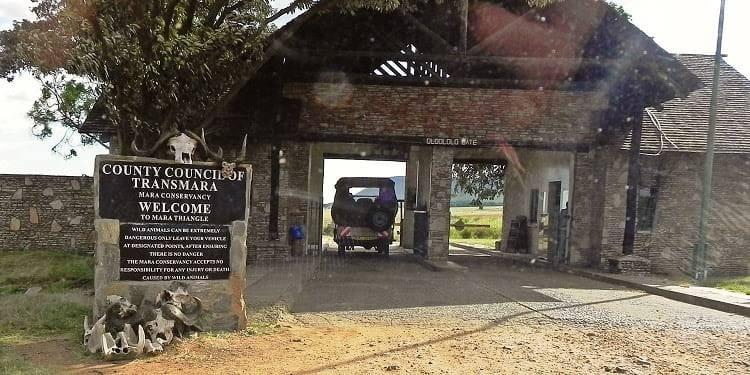So, It’s Your First Mara Safari - Read This Before You Climb in the Jeep

1. That first “Oh-my-goodness” moment
You think you’ve pictured it—then a full-grown male lion strolls past your open-sided Land Cruiser like a chilled labrador doing the school run, and your brain short-circuits. Nothing on a screen preps you for hearing an apex predator breathe. It’s cooler, stranger, and somehow calmer than the documentary voice-overs let on. Let it wash over you.
2. Patience > itinerary
The Mara is not an hourly theme-park parade. Some mornings you’ll ping-pong from lions to cheetahs to a leopard in twenty minutes; other times it’s zebras, impalas, zebras, impalas—and suddenly, hours later, a serval cat darts across the track and the car erupts. Sit with the slow bits. The bush rewards stillness.
3. Early alarms are non-negotiable
Predators do their best work at dawn and dusk. Roll out of bed while the sky’s still navy, slug that coffee, and aim for the park gate when it opens (around 6 a.m.). You might catch lions finishing a kill, cubs tumbling in the dewy grass, or a cheetah using your bonnet as a lookout post. Sleep is for Nairobi.
4. Cars are friend-shaped rocks to the animals
Newcomers tense up when a lion’s mane brushes the fender. Relax: cats see vehicles as harmless moving boulders. Stay seated, keep arms inside, talk in low voices, and you’re basically invisible. Your driver has spent years reading animal body language—trust them more than your racing pulse.
5. The Mara is huge—think small countries, not single park
There’s the Mara Triangle’s wide-open lawns, fig-tree tunnels near Talek, the hippo-stuffed Mara River, and the invisible line where Kenya melts into Tanzania’s Serengeti. Each zone has its own vibe. A single morning loop barely scratches the map; consider at least one full-day drive with a picnic to feel the sprawl.
6. Walking the river: the safari nobody tells first-timers about
Trade four wheels for two legs and take a guided nature walk along the Mara River. A ranger with a very real rifle will lead (hippos kill more people than lions—no joke). You’ll stand meters, not football-fields, from crocs the length of hatchbacks and pods of grunting hippos. It’s humbling, muddy, and worth the small spike in your insurance premium.
7. The world is your restroom (really)
There are designated picnic sites with drop loos, but the savannah is generous. When nature calls, tell the driver, scan 360° for cats, and fertilize Africa like the explorers did. Guys and girls alike—embrace the breeze; it’s freeing. Just carry tissue and pack the trash back out.
8. Watching the driver is half the show
Good guides steer three-ton trucks through axle-deep mud as if it’s a lazy river. If—when—you bog down, don’t sweat. Radios crackle, another cruiser appears, and you’ll be yanked free while exchanging grins with curious giraffes. Getting stuck is a rite of passage, not a disaster.
9. Lunch under a lone acacia
Forget white-tablecloth “bush breakfasts.” Pull up under any shady tree, un-clip the cooler, and tuck into samosas with elephants browsing in the middle distance. The smell of wood-smoke, diesel, and cold chapati is a memory that will outlive your Instagram reel.
10. Pack like a realist, not a catalogue model
- Layers: dawn is hoodie-cold; noon is fry-an-egg-on-the-bonnet hot.
- Muted colours: khaki is cliché because it works—bright red screams “look at me” to skittish antelope.
- Binoculars you actually like using (8×42 sweet spot).
- Dust-proof bag for cameras and phones—fine volcanic grit is sneaky.
- Power bank: the “one bar left” panic always strikes the moment a cheetah sprints.
- Soft bag, not a suitcase: easier to cram into the vehicle and tent.
- Tiny towel: wipe lenses, faces, muddy hands.
- Leave room for souvenirs: Maasai beadwork is irresistible.
Things I wished I’d skipped: that second fancy zoom lens (never left the bag), white sneakers (now permanently beige), and the drone (illegal in Kenyan national parks without a nightmare permit).
11. Budget talk - because honesty > hype
Park fees (roughly $80/day for non-residents), driver-guide tips ($10-20 per guest per day if you’re happy), full-day packed lunch surcharge, and a cheeky sundowner G&T add up fast. Worth every shilling, but plan for it so you’re not ATM-hunting in Narok.
12. The guarantee (of sorts)
Two decades in, I’ve never left the Mara without seeing something brand-new: a sun-bleached lion skull, a pair of secretary birds dancing, twenty-one giraffes threading between whistling-thorns in perfect single file. “Mara never disappoints” isn’t marketing fluff—it’s the law of this place.
13. Last word: trade FOMO for gratitude
You won’t tick every box. Maybe the leopard sleeps in deep grass or the migration herd is on the Tanzanian side this week. Shrug. The Mara dishes surprises on its own schedule, and that’s why you’ll be back. Bring patience, an open heart, and a decent thermos. The rest will find you—in its own wild, unrepeatable way.
Safe travels, and see you on the dusty track.
